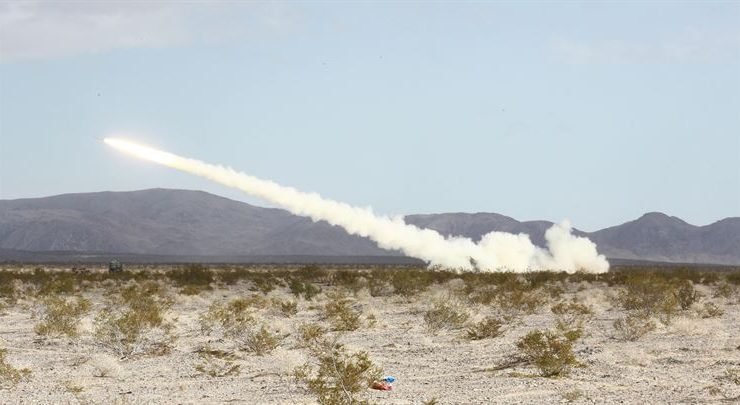 By Elias Marat
By Elias Marat
The U.S. national defense budget is one of the most bloated in the world, with funding exceeding $1 trillion as the Pentagon and defense industry-friendly politicians seek to secure the unquestioned dominance of the U.S. Armed Forces across the globe.
However, advances in the military-technical field by U.S. rivals like China and Russia—who have each developed advanced hypersonic deterrent weapons—have gripped U.S. war-planners with a feeling of insecurity over the state of the U.S. military’s overstocked arsenals, as well as a nagging sense that U.S. power is on the long-term decline.
With that in mind, the U.S. Army set about developing a brand-new weapon: a powerful cannon that can fire a projectile over a distance of more than 1,150 nautical miles—or the same distance between Nashville, Tennessee and New York City.
The service branch hopes to demonstrate a prototype of the new super-cannon by 2023, after which it will be determined whether the cannon is worthy of undergoing further tests, Defense News reports.
The Army is tackling the new project with the Research and Analysis Center at White Sands Missile Range, New Mexico, as well as the Center for Army Analysis “to confirm the service can accomplish what is expected from such a system,” Col. John Rafferty said.
Before entering live trials, the program first has to pass through what Rafferty described as “big technology gates,” and one will be completed “very soon” in what is said to be an early ballistic test at a Virginia facility.
The Army hopes that the new cannon can offer an edge on U.S. adversaries who have their own formidable defensive and deterrent capabilities. Rafferty believes that a U.S. strategy imbued with long-range air defense systems and artillery and coastal defense seamlessly integrated with long-range, over-the-horizon radars will be difficult to counter for U.S. foes.
Rafferty explained:
“That integrated system challenges even our most sophisticated aircraft and challenges our most sophisticated ships to gain access to the area.
That layered enemy standoff at the strategic level was really the fundamental problem. One of the ways to solve that problem is to deliver surface-to-surface fires that can penetrate this [anti-access, area-denial] complex and disintegrate its network and create windows of opportunity for the joint force to exploit.”
However, the key question is whether the new project can successfully enhance the Army’s capabilities without being too expensive—a key criteria for passing each of the technology gates.
Rafferty added:
This idea of volume and affordability and lethality is first and foremost in our minds.
In a recent interview, Army Chief of Staff Gen. James McConville told Defense News:
A lot of that comes down to cost.
If we are able to develop the strategic, long-range cannon system, the rounds may be only $400,000 or $500,000 compared to multimillion-dollar rounds. Cost does matter, and we are concerned about cost.
There are some, definitely, physics challenges in doing these types of things, and that is the trade-off.
The chief added that the Army is “trying to be innovative, but what they have to do is demonstrate the capability at each phase along the way. And if that doesn’t happen, we are not doing it.”

Be the first to comment on "The Army Is Building a Cannon Capable of Firing From Nashville to NYC"